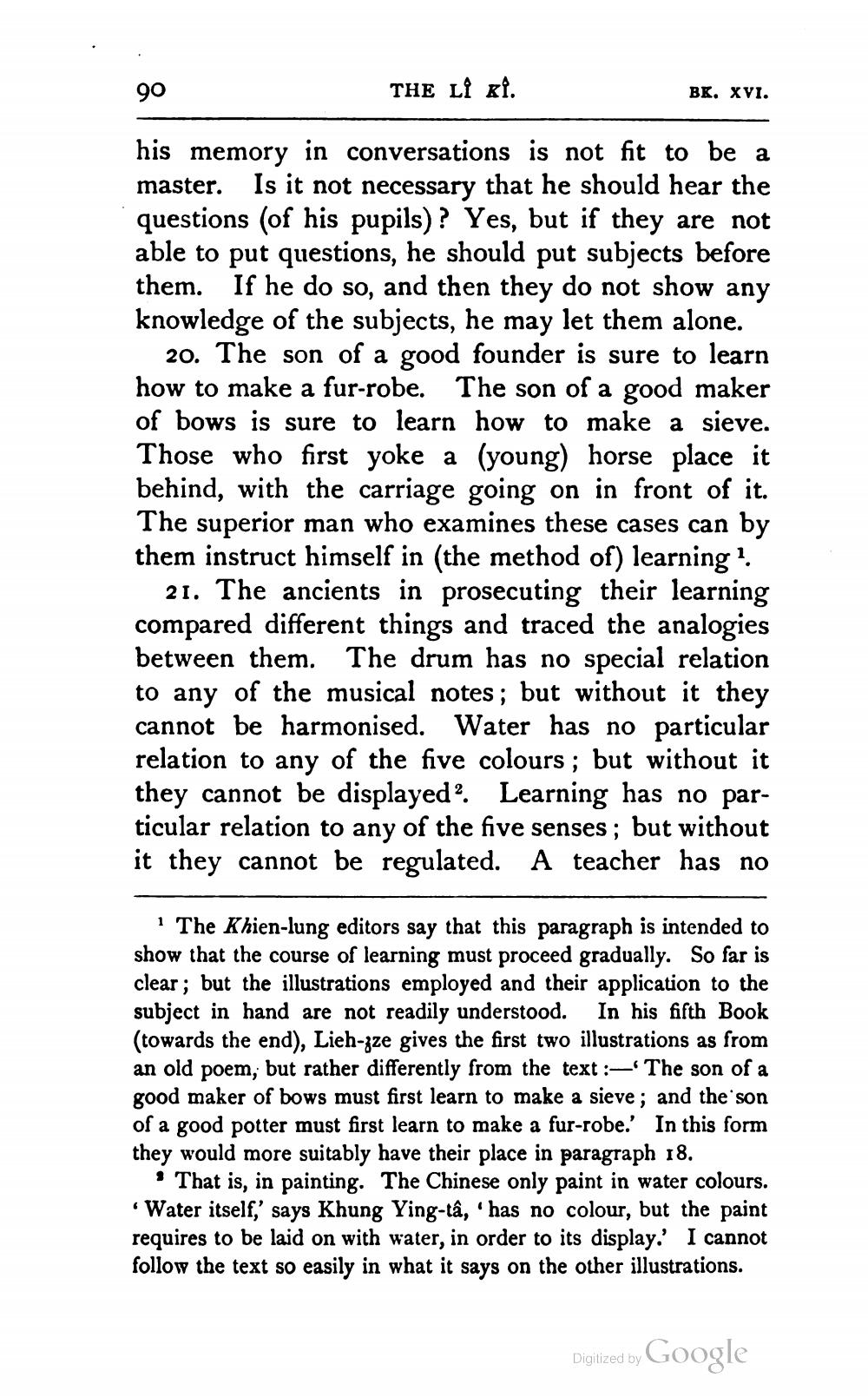________________
THE LÎ ki.
BK. XVI.
his memory in conversations is not fit to be a master. Is it not necessary that he should hear the questions (of his pupils)? Yes, but if they are not able to put questions, he should put subjects before them. If he do so, and then they do not show any knowledge of the subjects, he may let them alone.
20. The son of a good founder is sure to learn how to make a fur-robe. The son of a good maker of bows is sure to learn how to make a sieve. Those who first yoke a (young) horse place it behind, with the carriage going on in front of it. The superior man who examines these cases can by them instruct himself in the method of) learning
21. The ancients in prosecuting their learning compared different things and traced the analogies between them. The drum has no special relation to any of the musical notes; but without it they cannot be harmonised. Water has no particular relation to any of the five colours; but without it they cannot be displayed? Learning has no particular relation to any of the five senses; but without it they cannot be regulated. A teacher has no
The Khien-lung editors say that this paragraph is intended to show that the course of learning must proceed gradually. So far is clear ; but the illustrations employed and their application to the subject in hand are not readily understood. In his fifth Book (towards the end), Lieh-zze gives the first two illustrations as from an old poem, but rather differently from the text :- The son of a good maker of bows must first learn to make a sieve; and the son of a good potter must first learn to make a fur-robe.' In this form they would more suitably have their place in paragraph 18.
· That is, in painting. The Chinese only paint in water colours. Water itself,' says Khung Ying-tâ, 'has no colour, but the paint requires to be laid on with water, in order to its display.' I cannot follow the text so easily in what it says on the other illustrations.
Digitized by Google




